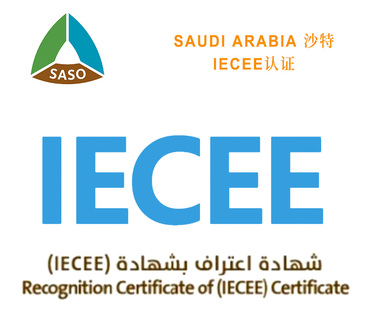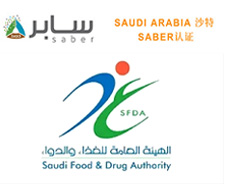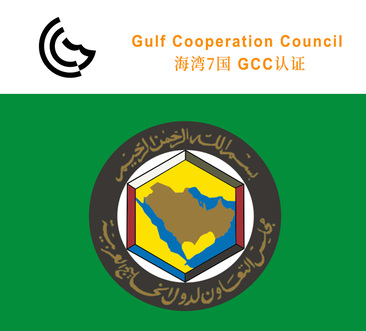News
-
MORE
202403-06
The CE certification standard process for different electronic products. CE certification refers to a certification mark that complies with European CE standards and can be freely circulated in Europe. Electronics sold in the European marketObtaining CE certification for products is an obligation and necessary. However, different electronic products undergo the process of obtaining CE certification and EN standardsThe requirements may vary. This article will briefly introduce the process of CE certification and list some common electronic productsEN standard requirements.The CE certification process includes: application, testing/evaluation, certificate issuance, and annual review. The application stage is necessary to submit to the certification bodyThe files and information, including technical documents, product manuals, and related test reports. The testing/evaluation phase is carried out by certification bodiesConduct product testing and evaluation to verify compliance with EN standards. The testing and evaluation projects may vary depending on the productThere are differences, but generally include tests on electromagnetic compatibility and safety. The certificate issuance stage is based on the certification body'sThe results of testing and evaluation are issued with a CE certification certificate, proving that the product meets the requirements of the EN standard. Annual audit is a certification bodyRegularly inspect and audit products that have obtained CE certification to ensure they continue to meet the requirements of EN standards.Different electronic products have different processes and EN standard requirements for obtaining CE certification. Here are some common electronic productsExample of EN standard requirements:1. Electronic equipment: The EN 55032 standard requires that the electromagnetic radiation of electronic equipment should not exceed a certain limit to ensure that it will not affectInterference from surrounding equipment and environment.2. Power adapter: The EN 60950 standard requires that the power adapter should have sufficient power under normal use and fault conditionsSafety to prevent hazards such as electric shock and fire.3. Communication equipment: The EN 301489 standard requires communication equipment to not cause damage to other devices when receiving and transmitting wireless signalsInterference, and there must be a certain level of anti-interference ability during use.4. Household appliances: The EN 60335 standard requires that household appliances should have sufficient safety in both normal use and fault conditions,To prevent hazards such as electric shock, short circuit, and overheating.5. Medical equipment: The EN 60601 standard requires medical equipment to have sufficient safety in both normal use and failure states,To protect the health and safety of patients and healthcare workers.
-
MORE
202403-06
The CE certification standards and process steps for European regulations. With the rapid development of the global economy and the continuous growth of international trade, the European market has become an indispensable factor for many enterprisesOpportunities. However, entering the European market and selling products there is not an easy task. The European Union has developed a series of regulations and standards,To ensure consumer safety and product quality. CE certification has become a necessary condition for the European market. In this article, we will delve deeper intoExplore the standard requirements and process steps for CE certification to help businesses better understand how to ensure product compliance with European regulations.Firstly, let's understand what CE certification is. CE certification (short for Conformit é Europe é ene) refers to productsComplies with regulatory requirements and standards in the European market. Through CE certification, manufacturers can sell their products to the European market,And ensure that its products meet European requirements, effectively reducing market access barriers.The standard requirements and process steps for CE certification are as follows:1. Determine applicable directives: The European Union has developed many directives related to different types of products. Manufacturers first need to determine the suitabilityApplicable directives for its products and understanding of relevant standards and regulations.2. Conduct product evaluation: According to applicable directives, manufacturers are required to conduct product evaluation. This can be achieved through self authentication or delegated authenticationInstitutions conduct evaluations to complete. The purpose of evaluation is to ensure that the product complies with relevant standards and regulations, and meets consumer safety requirements.3. Preparation of technical documents: Manufacturers need to prepare a detailed technical document to prove that their products comply with relevant standards and regulations.Technical documents should include product specifications, design drawings, test reports, and other relevant information.4. Conduct internal production control (IPQC): Manufacturers need to establish an internal production control (IPQC) system to ensure that products are in compliance withCompliance with relevant regulations during the production process. This includes aspects such as raw material procurement, production process management, quality control, etc.5. Conduct risk assessment: Manufacturers need to conduct a product risk assessment to determine potential risks that may exist during normal use of the productTake corresponding measures to mitigate these risks.6. Conduct laboratory testing: Manufacturers need to send their products to accredited laboratories for testing to ensure they meet relevant standardsAnd regulations. The testing may involve electromagnetic compatibility, mechanical properties, chemical content, and other aspects.7. Preparation of declaration documents: Manufacturers are required to prepare a declaration document that meets CE certification requirements. The declaration document should include product informationManufacturer information, applicable directives, standards and regulations, etc.8. Marking with CE Mark: After all necessary steps and tests, manufacturers can mark their products with the CE mark. CE MarkIndicates that the product meets European requirements and has passed CE certification.Through the above process steps, CE certification ensures that products comply with relevant regulatory requirements before entering the European market. This helps toSafeguard consumer rights and improve product quality and safety. For enterprises, CE certification is also a way to enter the European marketThe threshold, through certification, can enhance consumer trust and recognition of the product.
-
MORE
202403-06
Market demand for electrical certification SASO in Middle Eastern countries. In recent years, the economies of Middle Eastern countries have developed rapidly, and international trade cooperation has continued to deepen. Meanwhile, electrical equipment in the Middle East regionThe market is also showing a trend of vigorous development. However, Middle Eastern countries have increasingly high requirements for the quality and safety of electrical equipment.Therefore, understanding the demand and related certification standards of the electrical equipment market in Middle Eastern countries is crucial for enterprises.In Middle Eastern countries, SASO certification is considered an entry standard for the electrical equipment market. SASO certificationIt refers to proving the compliance of products through testing and verification that complies with relevant quality and safety standards in the Middle East region. Only passedOnly SASO certified products can enter the Middle East market and be sold.Firstly, Middle Eastern countries have very strict quality requirements for electrical equipment. The climate conditions in Middle Eastern countries are relatively harsh,Environmental factors such as high temperature and humidity have high requirements for the stability and safety of electrical equipment. Therefore, Middle Eastern countriesThe electrical equipment market has high requirements for product quality, reliability, and durability. Only through rigorous testing andVerification is necessary to obtain SASO certification that meets the needs of the Middle East market.Secondly, SASO certification also covers the safety requirements of Middle Eastern countries for electrical equipment. Safety regulations for electrical equipment in Middle Eastern countriesVery strict, requiring products to comply with relevant safety standards, such as requirements for electric shock prevention, fire prevention, etc. In electrical equipmentEnsuring the safety of products in the market is a key concern for consumers in Middle Eastern countries. Therefore, SASO certification can prove thatThe product meets the safety standards of Middle Eastern countries, enhancing its competitiveness in the market and consumer trust.In addition, Middle Eastern countries have also put forward high requirements for energy consumption and environmental protection of electrical equipment. With the increasing global energy issuesProminent, Middle Eastern countries are also actively promoting the improvement of energy efficiency and the strengthening of environmental awareness. Therefore, SASO certification also includesConduct energy efficiency testing and environmental protection requirements for electrical equipment to ensure that products meet the requirements of Middle Eastern countries in terms of energy utilization and environmental protection.Therefore, for electrical equipment enterprises, it is important to actively understand and master the demand analysis of SASO certification in Middle Eastern countries.Only by meeting the requirements of Middle Eastern countries in terms of product quality, safety, energy efficiency, and environmental protection can we gain market recognitionAnd the favor of consumers. Through compliance certification, enterprises can further explore the Middle East market and achieve broader development space.
-
MORE
202403-06
Preparation of ROHS certified environmental directive compliance documents - Material requirements: ROHS certification refers to the testing of the material composition of electronic circuits or electronic electrical products to determine whether they comply with the European EnvironmentRequirements for Restriction of Hazardous Substances Directive. This certification is for the electronics industryIt provides important environmental standards and protects humanity and the earth from harmful substance pollution. To ensure ROHS certification,Manufacturers need to prepare a series of environmental compliance documents to prove that their products comply with relevant standards. This article will introduce ROHSCertification information requirements, and provide some suggestions and guidance on preparing these documents.The main requirements for ROHS certification materials include:1. Parts List (BOM): Provide a list of all components used in the product, including manufacturers, models, and quantitiesDetailed information. This list is very important because ROHS certification requires the prohibition of the use of specific harmful substances such as lead, mercury, and cadmiumFor each component, the manufacturer needs to confirm that it does not contain these prohibited substances, such as hexavalent chromium.2. Declaration of Raw Material Suppliers: Raw material suppliers related to each component are required to provide a declaration that complies with ROHS certification requirements. This statement should include proof that the raw materials do not contain restricted substances and be signed and confirmed by the supplier. Manufacturers need to collectThese statements ensure transparency in the supply chain to demonstrate product compliance.3. Material testing report: For key components or raw materials, the manufacturer needs to conduct material testing and provide a testing report. theseThe report should be provided by an accredited laboratory that meets relevant testing standards, demonstrating that the materials do not contain harmful substances and meet ROHS certification requirementsRequirements.4. Process flow documents: These documents provide a detailed description of the production process of the product, including the materials and processes used in each link.For each step, the manufacturer needs to check whether restricted substances have been used and provide corresponding proof documents. These files willAssist ROHS certification bodies in understanding the production process of products and evaluating their compliance.In addition to the above mentioned content, manufacturers also need to ensure the accuracy and completeness of ROHS certification materials, and ensure their traceability.When preparing these documents, the following suggestions and guidance can help manufacturers improve work efficiency and accuracy:1. Advance planning and preparation: The preparation of ROHS certification materials requires a certain amount of time and effort, therefore, manufacturers shouldPlan and arrange relevant work in advance. Clarify the responsible person and schedule, and ensure sufficient resources are used for data collection and organization.2. Close cooperation with suppliers: Suppliers are one of the important sources of ROHS certification materials, and manufacturers should establish good cooperation with themRelationship. Communicate with suppliers to ensure they understand the requirements of ROHS certification and actively cooperate in providing relevant statements and supporting documents.3. Ensure the accuracy of data: When collecting and organizing relevant documents, manufacturers need to ensure the accuracy and completeness of data.For each component and raw material, it is necessary to carefully verify the substances contained and fill in the correct model and quantity information.4. Establish a reasonable document management system: In order to ensure the traceability and easy retrieval of ROHS certification materials, manufacturers need to establishA reasonable document management system. Classify and number different files, and keep them properly for future queries and updates.
-
MORE
202403-06
Application Guidelines for SASO Saudi Arabian Certification Applying for Saudi Arabian Standards Organization certification requires following a series of processesAnd procedures to ensure compliance of your product in the Saudi Arabian market. The following is a general SASO certification operation guide:1. Determine product scope: First, determine if your product requires SASO certification. Different types of products require different Certification, therefore it is necessary to ensure that your product meets the requirements of SASO certification.2. Choose a certification body: Choose a certification body recognized by SASO to conduct relevant testing, auditing, and certification.You can find a list of recognized certification bodies on SASO's official website.3. Prepare documents and materials: Prepare necessary documents and materials, including but not limited to the following:Product technical specifications and descriptions.Manufacturing processes and quality control processes.Design drawings and product samples.Test report to prove that the product complies with relevant international standards or SASO standards.Product identification and packaging information.Quality certificates, such as ISO certification (if applicable).4. Product testing: Under the guidance of certification bodies, submit product samples for testing. Testing will be based on product type andThe requirements of certification bodies vary, usually including performance testing, safety testing, and quality control testing.5. Certification review and inspection: The certification body will review the product's documents and test reports, and may conduct factory inspections,To ensure that the product meets SASO certification requirements.6. Submit SASO certification application: Once the product has passed the testing, review, and inspection, you can submit the SASO to the certification bodyCertification application, while providing necessary documents and information. The certification body will assist you in preparing and submitting your application.7. SASO Certification Review and Review: The certification body will submit your application to SASO for review and review.This process may take some time, depending on the type of product and the complexity of the application.8. Obtaining SASO certification: If the product has passed SASO certification, you will receive a SASO certification certificate, which proves that the product isCompliant in the Saudi Arabian market. This certificate usually needs to be indicated on the product.9. Regular supervision and updates: SASO certification usually requires regular product supervision and inspection to ensure that products continue to be in the marketCompliance. In addition, if there are changes or updates to the product, SASO needs to be notified in a timely manner and relevant changes and updates must be metRequirements.
-
MORE
202403-06
The EU General Product Safety Regulations have officially come into effect The General Product Safety Regulation (GPSR) of the European Union officially came into effect on June 12, 2023. The new regulations aim to address the major social change issues that have affected consumer product safety in the past two decades, such as accelerating digitization, new technology development, and globalized supply chains. The new General Product Safety Regulations aim to ensure the safety of all consumer products in the EU market, including non food products sold both offline and online. Specifically, through the following channels:Key factors in consumer product safety assessment, such as the constantly evolving characteristics of the product or its interrelationships;Improve product safety conditions between online and offline sales;Develop specific product safety requirements for the online market to protect consumers from dangerous products sold in the online market;Expand the obligation for all non coordinated products imported into the EU to have economic operators responsible for product safety issues within the EU;Provide necessary tools for EU national institutions to strengthen their enforcement powers;Require consumers to directly contact standardized recalls through announcements to ensure the effectiveness of product recalls.
-
MORE
202403-06
Recent significant regulatory updates from TEC and BIS in India In the first half of June 2023, the Telecommunications Engineering Centre of India (TEC) and the Bureau of Indian Standards (BIS) released several important regulatory updates, with the following key points:(1) Category and date of experimental products for expanding BIS parallel testing:BIS India has extended the trial date for parallel testing to December 31, 2023. The project initially only opened up mobile phone products, but now it has added product categories including wireless headphones/earphones and laptops/tablets. The parallel testing conditions originally released by BIS on December 19, 2022 remain unchanged.(2) Extend the mandatory date for mandatory safety testing (ITSAR):India has extended the mandatory dates for Wi Fi CPE and IP router mandatory security testing (ITSAR) from July 1, 2023 to January 1, 2024.(3) Exemption of Cellular Network Repeater Test Parameters (MTCTE):TEC India announced an exemption for specific testing items of cellular network repeater products under MTCTE certification. Unless otherwise notified, the exemption is valid until June 30, 2023.
-
MORE
202403-06
India plans to revise the regulations on alcoholic beverages On May 11, 2023, the Food Safety Standards Authority of India (FSSAI) released D L. Consultation document No. 33004/99REGD, proposing to revise the regulations on alcoholic beverages, with a feedback period of 60 days. Main content:1. Add the definition of low alcohol beverages, with an alcohol content of 0.5 to 8.0%, and allow the addition of fruit juice, vegetable juice, sugar, salt, or carbon dioxide; Add the definitions of original country wine and original Indian wine, which are alcoholic beverages made by fermenting and distilling fermented molasses, maltose syrup, potatoes, cassava, fruits, etc; Wine made from fruits other than grapes is changed to: fruit wine (excluding wine) and honey wine; Definition of honey wine; Beverages containing wine do not require the addition of carbon dioxide for acidification treatment;2. Revise the definition of craft beer, and revise Indian rural wine to Indian Baijiu or original Baijiu or original Baijiu; Classify craft beer according to the range of alcohol content; The mixture of carbon dioxide and nitrogen is only suitable for craft beer;3. Add specific regulations to the list of distilled spirits in India, the list of undistilled spirits in India, and the list of low alcohol spirits (with an alcohol content of 4-5%). For example, distilled spirits are allowed to use barley as the raw material; Specific regulations for the use of grapes and other substances in white or red wine without distillation.
HOT services
RELATED NEWS
-
+ Market demand for electrical certification SASO in Middle Eastern countries.
2024-03-06
-
+ The CE certification standards and process steps for European regulations.
2024-03-06
-
+ Application Guidelines for SASO Saudi Arabian Certification
2024-03-06
-
+ Preparation of ROHS certified environmental directive compliance documents - Material requirements:
2024-03-06
-
+ The EU General Product Safety Regulations have officially come into effect
2024-03-06
-
+ Recent significant regulatory updates from TEC and BIS in India
2024-03-06
-
 Tel
TelHotline
+86 400-826-3320
-
 WhatsApp
WhatsAppWhatsApp
+86-15355373320-penny
+86-13362995501-laura
-
Skype
-
 E-mail
E-mail -














